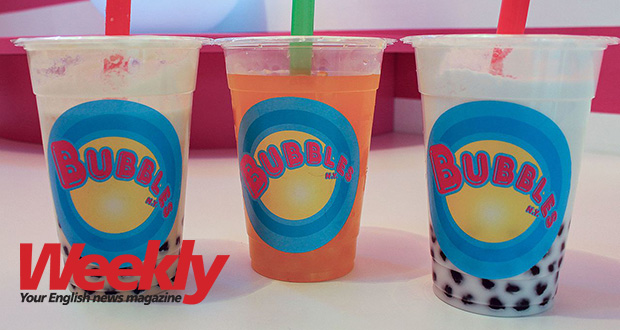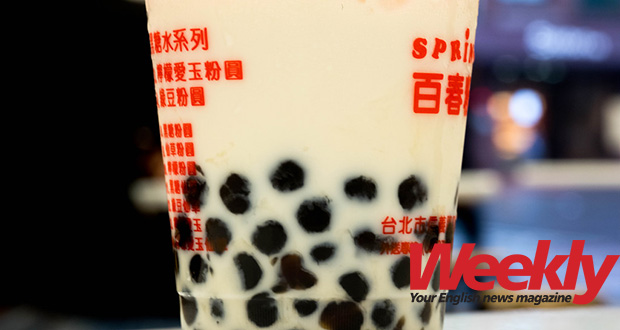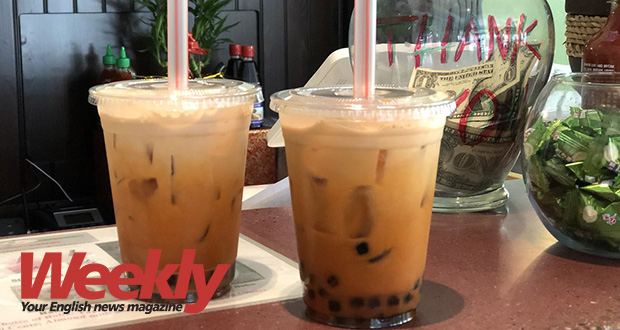Publicité
Bubble tea: Is it healthy?
Par
Partager cet article
Bubble tea: Is it healthy?

Bubble tea is a Taiwanese tea-based drink invented in Tainan and Taichung in the 1980s. Since it was first introduced, its popularity has sky rocketed around the world, including in Mauritius and especially among the youth. But what is bubble tea really made of?
Bubble tea was first made in Tainan and Taichung, two cities in Taiwan, back in the 1980s. While several tea companies claim to have invented the beverage, credit is often given to Liu Han Chie, the owner of the Chun Shui Tang teahouse in Taichung, or to Tu Tsong-he, the owner of the Hanlin Tea Room of Tainan.
Bubble tea usually consists of a tea-base drink mixed with fruit juice or flavoured milk, as well as chewy tapioca pearls, fruit jelly, chunks of pudding, aloe vera or popping boba. After people discovered the drink in Taiwan, businesses offering bubble tea have emerged in several countries around the world, especially in North America and Europe. In New York City, for example, one can find a bubble tea store on practically every street corner. Available in different sizes and flavours, bubble is especially loved and widely consumed by youngsters and teenagers.

In Mauritius, the first bubble tea shop opened a few years ago in late 2012. Since then, many similar businesses have sprouted up around the island, and there is now a bubble tea shop in almost every mall in Mauritius, offering clients a variety of flavours from strawberry, mango and passion fruit to Oreo cookies, virgin piña colada, hazelnut and even coffee flavours. Bubble tea shops are also a popular hangout place for teenagers.
What really makes a bubble tea is the tapioca pearls. In fact, without tapioca pearls and popping boba, it wouldn’t really be called bubble tea. So what are these pearls and boba exactly?
To make the tapioca pearls chewy, just like those used in bubble tea, raw tapioca pearls – which are usually black, white or transparent and relatively flavourless – are cooked in boiling water until they become soft. The pearls are then added into a bowl filled with a syrup mixture until they become sweet. The tapioca pearls are then stored in the fridge so that they remain chewy until they are ready for use. However, while the chewy tapioca pearls become sweet after being soaked in syrup, they get their real flavour – and their calories – when served in the drink itself. In fact, when uncooked, about 30 grammes – the amount typically used in bubble tea – of tapioca pearls contain only about 68 calories. However, when soaked in syrup and added to the sweet and slushy bubble tea, their calorie count naturally increases significantly.

As for the popping boba, it is made from a process called molecular gastronomy, which is the chemical and physical reaction of ingredients put together during cooking. For fruity popping boba, the fruit juice is thoroughly mixed with a small quantity of powdered sodium alginate and then dripped into a container filled with a cold solution of calcium chloride. Just like bubbles of water are formed in oil when water is added to it, every drop of the alginated juice tends to create small balls in the calcium solution. After a few seconds, the calcium solution then causes the outer layer of each alginated liquid ball to form a thin, elastic skin. The result is the popping boba – little flavoured jelly-like balls that are filled with juice that burst in your mouth when you bite into them – that is then rinsed in water and saved for later use in food or drinks.
In bubble tea shops, these chewy pearls and popping boba are added into cups of different cold drinks like smoothies, tea-based drinks, milk-based tea, coffee beverages and fruity teas. The drink is then shaken well to mix all the ingredients, sealed and sold. Bubble tea also often contains other flavoured special powders, syrup, fruit juice and even sweetened condensed milk to create the taste that kids love so much. That said, the answer to the question of whether bubble tea is healthy is…no.
In fact, while tea itself is a healthy drink that provides antioxidants that may help to reduce risks of getting heart diseases and cancer, bubble tea, on the other hand, isn't very nutritious and contains alarmingly high levels of sugar. According to Livestrong, bubble teas can contain as much as half a cup of cooked tapioca pearls, a quarter of a cup of sugar and one eighth cup of sweetened condensed milk per serving, which is a lot more than what the American Heart Association recommends – a limit of six teaspoons of added sugar per day for women and nine teaspoons for men.

“Adding these ingredients to calorie-free tea adds 453 calories to your beverage,” Livestrong reported.
But that is not all, according to reports, these tapioca pearls could be dangerous too. For example, German researchers from the University Hospital Aachen have recently found traces of aspolychlorinated biphenyls – carcinogenic chemicals – in tapioca ball samples. Consuming a lot of tapioca pearls may also lead to constipation in some cases.
For those who are really fond of bubble tea, one way to make the beverage slightly healthier is by making it at home using only one tablespoon of sugar, honey or stevia instead, and adding low-fat milk and coconut milk instead of sweetened condensed milk. Although still high in sugar, it will have enough calories and fat to justify the urge of having the beverage as an occasional treat. However, experts strongly advise against the daily consumption of bubble tea.
For more views and in-depth analysis of current issues, Weekly magazine (Price: Rs 25) or subscribe to Weekly for Rs110 a month. (Free delivery to your doorstep). Email us on: weekly@lexpress.mu
Publicité
Publicité
Les plus récents






